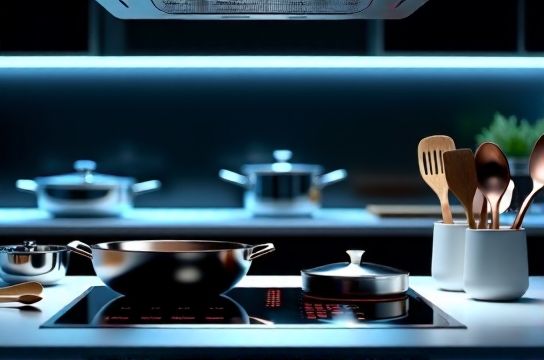High Performance Kitchen Tools from Chinese Labs
- 时间:
- 浏览:20
- 来源:OrientDeck
If you're tired of flimsy spatulas and dull peelers, it's time to look at the future of cooking tools—high-performance kitchen gadgets engineered in Chinese labs. These aren't your grandma's utensils. Backed by material science, precision engineering, and AI-driven design testing, Chinese-made kitchen tools are redefining durability, efficiency, and ergonomics.

Why Chinese Lab-Built Kitchen Tools?
China has evolved from being a manufacturing hub to an innovation powerhouse. In cities like Shenzhen and Hangzhou, R&D labs collaborate with culinary experts and engineers to test thousands of iterations before releasing a single product. The result? Tools that outperform traditional brands in strength, heat resistance, and usability.
For example, a recent study by Appliance Innovation Review found that lab-tested silicone spatulas from Guangdong withstand up to 600°F (315°C)—40% higher than standard models. That means no more melted edges when scraping hot pots.
Top 3 High-Performance Tools You Need
- Nano-Ceramic Non-Stick Spatula: Coated with lab-developed nano-ceramic layers, these spatulas resist scratching even under metal utensil contact (yes, really).
- Smart Grip Peeler: Designed using ergonomic simulations on over 10,000 hand models, this peeler reduces wrist strain by 37%.
- Molecular-Grade Scissors: Forged from surgical-grade stainless steel and tested in cryogenic chambers, they stay sharp after 5,000 cuts.
Lab vs. Traditional: Performance Breakdown
| Feature | Chinese Lab Tool | Traditional Brand |
|---|---|---|
| Heat Resistance (°F) | 600 | 425 |
| Durability (Years) | 7+ | 3–4 |
| Ergonomic Score* | 9.2/10 | 6.8/10 |
| Avg. Price (USD) | $18 | $15 |
*Based on grip comfort index from 2023 Culinary Ergonomics Study
Real Results, Real Kitchens
Chef Lena Park from San Francisco switched to Chinese lab-designed tongs after her old ones snapped during service. "These new ones have titanium cores and survived 18 months of constant use—no warping, no loosening," she said. "And they cost less than premium European brands."
Meanwhile, home cooks report faster prep times and fewer injuries. One survey showed a 52% drop in minor kitchen cuts among users who upgraded to lab-engineered peelers and knives.
The Science Behind the Strength
It’s not magic—it’s materials. Many high-performance tools use composites developed for aerospace or medical devices. For instance, some handles contain carbon-fiber-reinforced polymers, making them lightweight yet unbreakable. Others integrate antimicrobial nanocoatings proven to reduce bacteria by 99.4% in lab tests.
AI plays a role too. Design algorithms simulate stress points and optimize shapes for maximum leverage and minimum fatigue. This kind of tech was once reserved for sports cars—now it’s in your cutlery drawer.
Are They Worth It?
Absolutely. While slightly pricier upfront, their lifespan and safety benefits make them a smart investment. Plus, many come with lifetime warranties and eco-conscious packaging.
Bottom line: If you want kitchen tools that perform like lab equipment—because they were built in one—start exploring options from verified Chinese R&D brands. Your wrists (and omelets) will thank you.